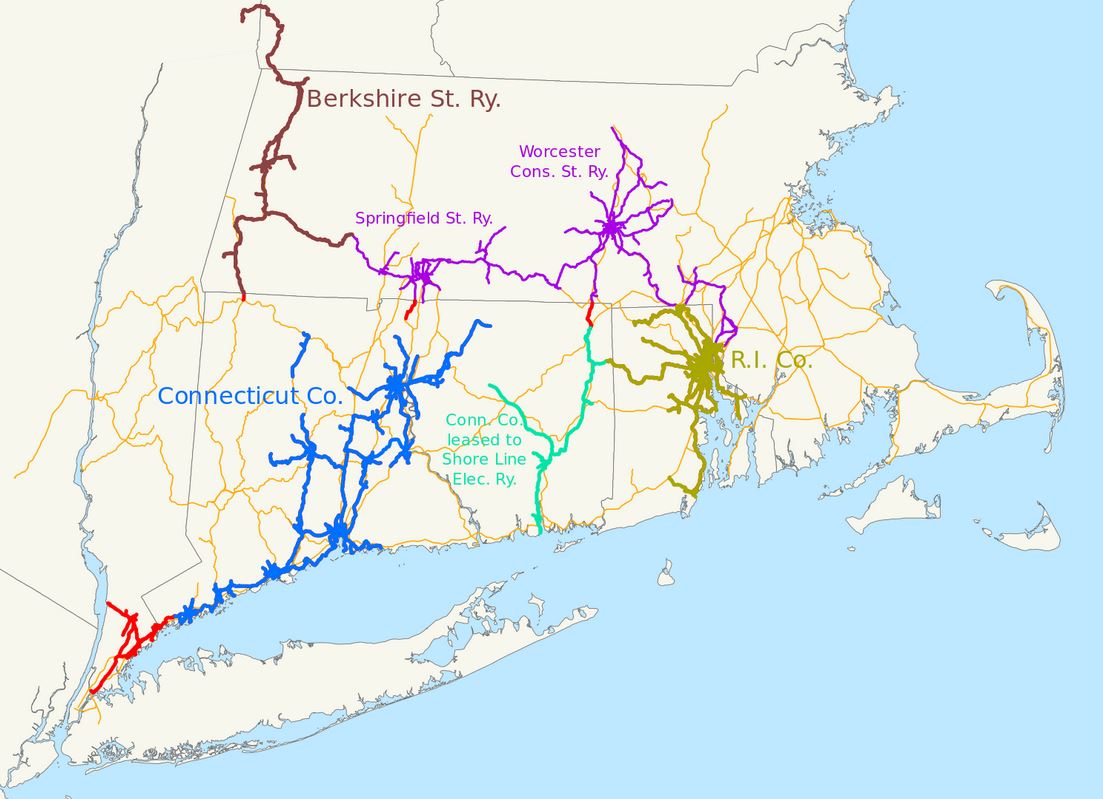Connecticut is a state in the northeastern region of the United States, known for its history, stunning landscapes, and vibrant cities. One of the vital components of Connecticut’s history and development is its railroads. The Connecticut railroad map has played a crucial role in the state’s economic growth and transportation for over two centuries. Today, Connecticut’s rail system continues to serve as a primary mode of transportation for both people and goods, and the Connecticut Railroad Map is a crucial tool for navigating the state’s railway network.
Connecticut Railroad Map

The Connecticut Railroad Map is a comprehensive guide to the state’s railroad system. It includes all of the major rail lines, stations, and connections across the state. The map is updated regularly, reflecting the changing landscape of Connecticut’s railways. The map provides a vital resource for commuters, tourists, and anyone else looking to navigate Connecticut’s railway system.
One of the most critical rail lines in Connecticut is the New Haven Line. The New Haven Line is a commuter rail line operated by the Metro-North Railroad, which runs from New Haven, Connecticut, to New York City. The line serves many cities and towns in Connecticut, including Stamford, Bridgeport, and Norwalk. The New Haven Line is one of the busiest commuter rail lines in the United States, carrying thousands of passengers every day.
The New Haven Line has several branches, including the New Canaan Branch, the Danbury Branch, and the Waterbury Branch. The New Canaan Branch is a 7.8-mile line that runs from Stamford to New Canaan. The Danbury Branch is a 24.6-mile line that runs from Norwalk to Danbury. The Waterbury Branch is a 27.7-mile line that runs from Bridgeport to Waterbury. Each branch serves different communities and provides important transportation options for residents.
Another significant railway line in Connecticut is the Shore Line East. The Shore Line East is a commuter rail service that runs between New London and New Haven, Connecticut. The line serves several towns and cities along the Connecticut shoreline, including Old Saybrook, Clinton, and Branford. The Shore Line East provides an important transportation option for commuters and tourists, offering scenic views of the Connecticut shoreline.
Connecticut is also home to several freight railroads, which transport goods and products across the state. One of the most significant freight railroads in Connecticut is the Providence and Worcester Railroad. The Providence and Worcester Railroad is a 528-mile freight railroad that operates in Connecticut, Massachusetts, and Rhode Island. The railroad serves several industries, including manufacturing, agriculture, and construction.
Another important freight railroad in Connecticut is the Pan Am Railways. The Pan Am Railways is a 1,700-mile freight railroad that operates in several states, including Connecticut, Maine, Massachusetts, New Hampshire, and Vermont. The Pan Am Railways serves several industries, including paper, pulp, and chemicals.
In addition to the New Haven Line, the Shore Line East, and the freight railroads, Connecticut is home to several other railway lines, including the Hartford Line, the Naugatuck Railroad, and the Essex Steam Train and Riverboat. The Hartford Line is a commuter rail service that runs from New Haven to Springfield, Massachusetts, with several stops in Connecticut, including Hartford and Windsor Locks. The Naugatuck Railroad is a heritage railway that operates on a 20-mile stretch of track in Connecticut, offering scenic tours of the state’s countryside. The Essex Steam Train and Riverboat is another heritage railway that operates on a 12-mile stretch of track, offering tours of the Connecticut River Valley.
Connecticut’s railway network has played an essential role in the state’s economic growth and development. Railways have facilitated the transportation of goods and products across the state, connecting the Connecticut Railroad Map to other parts of the country. Railways have also provided crucial transportation options for commuters, reducing traffic congestion and improving air quality.
The Connecticut Railroad Map has undergone significant changes over the years. The state’s railways have been impacted by technological advancements, changing transportation needs, and shifts in the economy. For example, the decline of manufacturing in the state has reduced the demand for freight rail transportation, while the growth of suburban communities has increased the demand for commuter rail services.
Despite these changes, Connecticut’s railways remain a vital part of the state’s transportation infrastructure. Railways continue to provide efficient and cost-effective transportation options for both people and goods. The Connecticut Railroad Map is a crucial tool for navigating the state’s railways, providing information on stations, routes, and connections.
In conclusion, the Connecticut Railroad Map is a vital resource for navigating the state’s railway network. Connecticut’s railways have played an essential role in the state’s economic growth and development, connecting communities, facilitating transportation, and reducing traffic congestion. From the New Haven Line to the Shore Line East, and from the Providence and Worcester Railroad to the Naugatuck Railroad, Connecticut’s railways continue to provide important transportation options for both people and goods. As the state’s transportation needs continue to evolve, The Connecticut Railroad Map is likely to play an even more critical role in the years to come.

